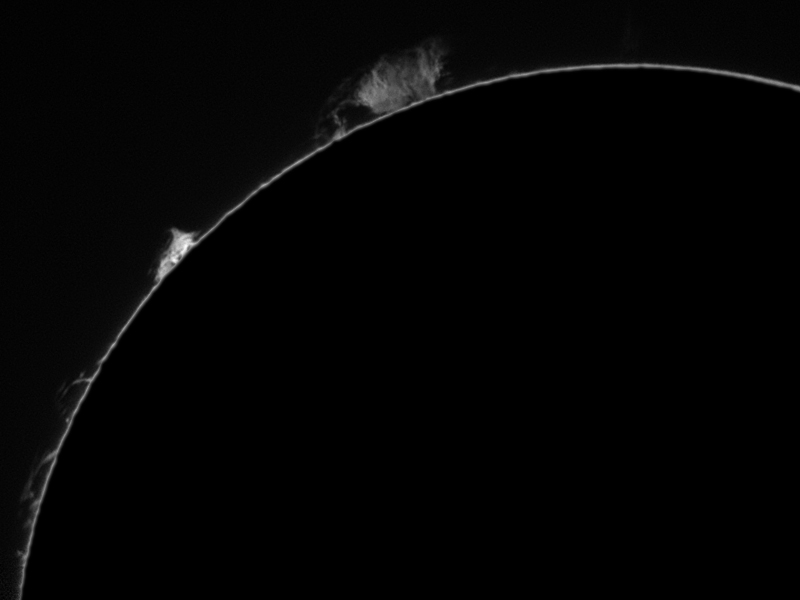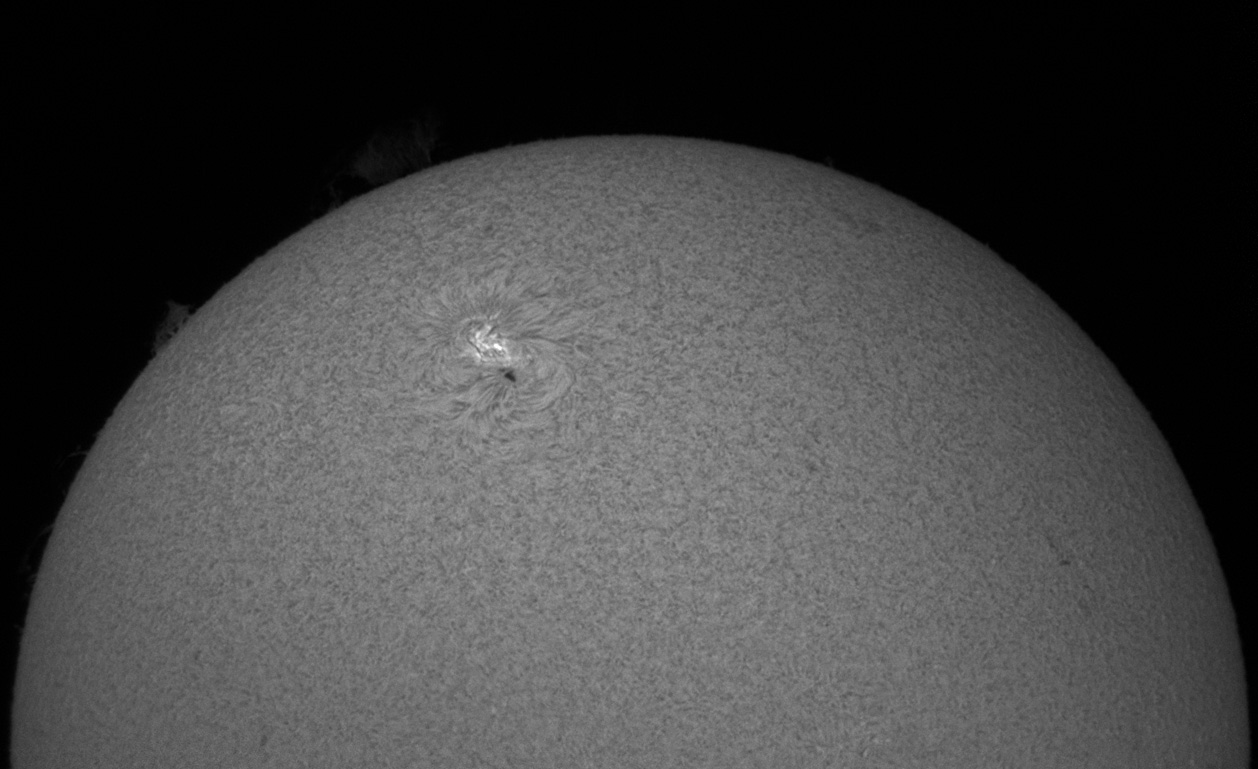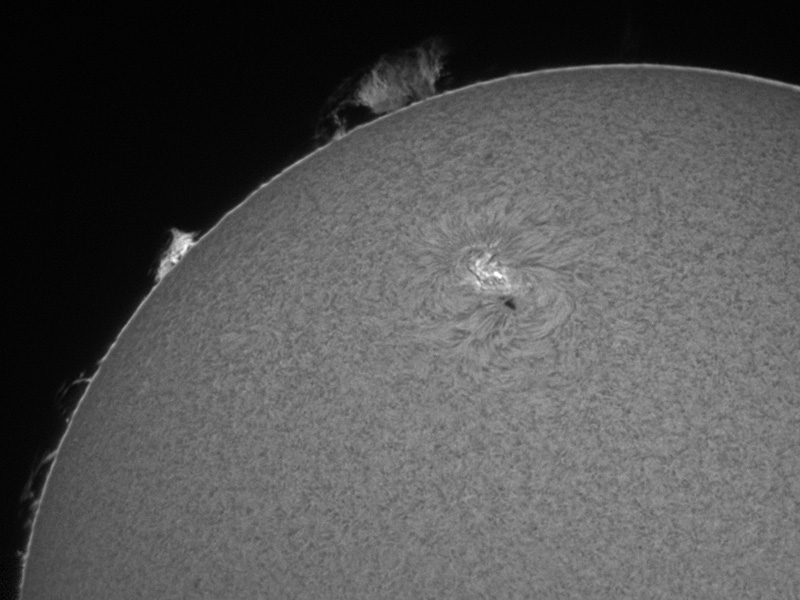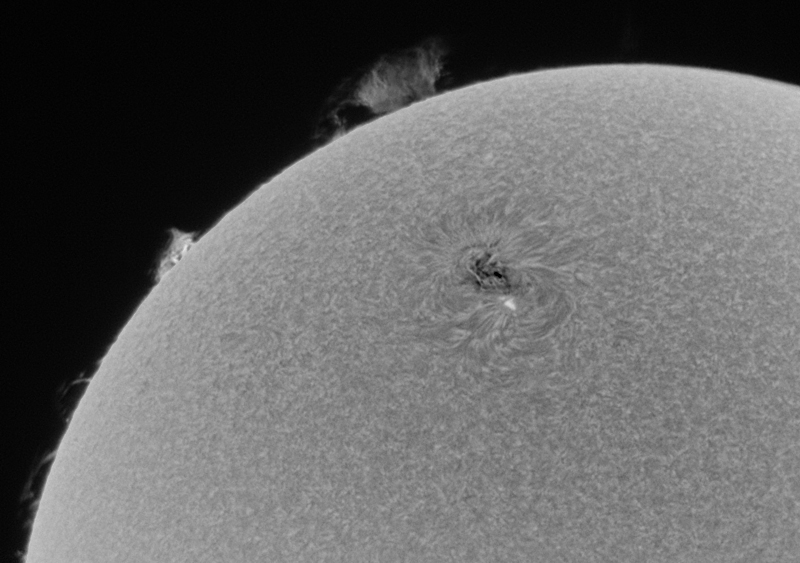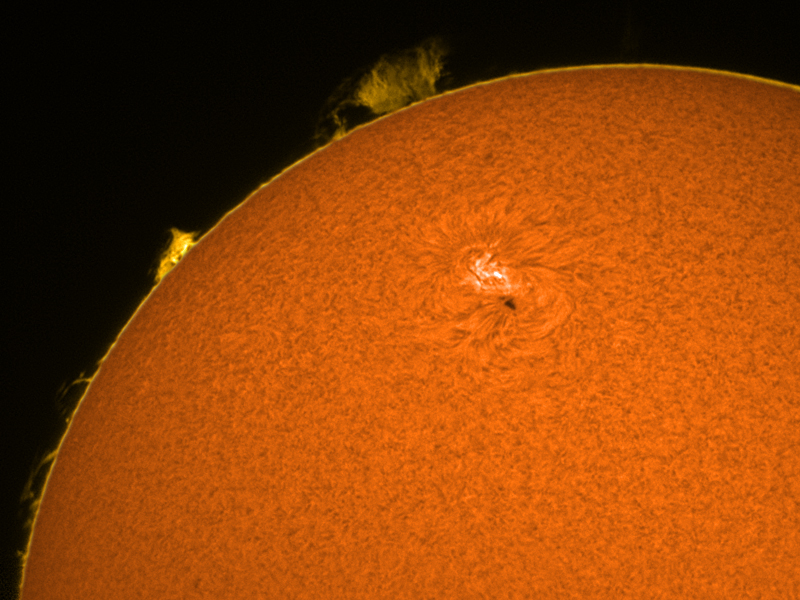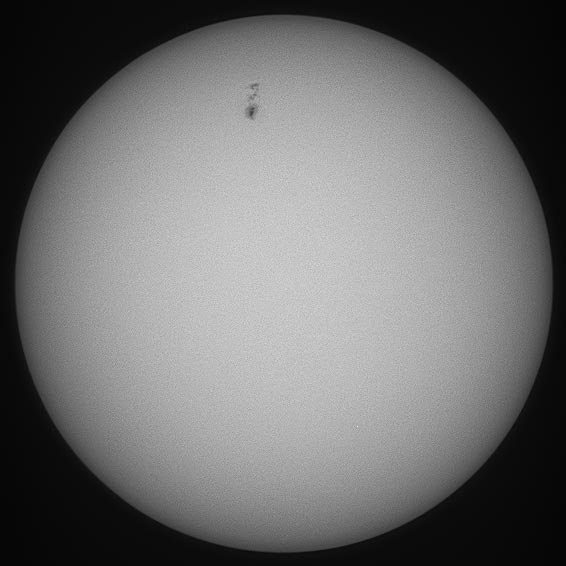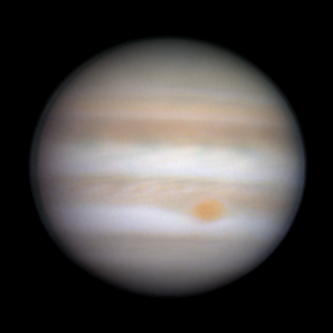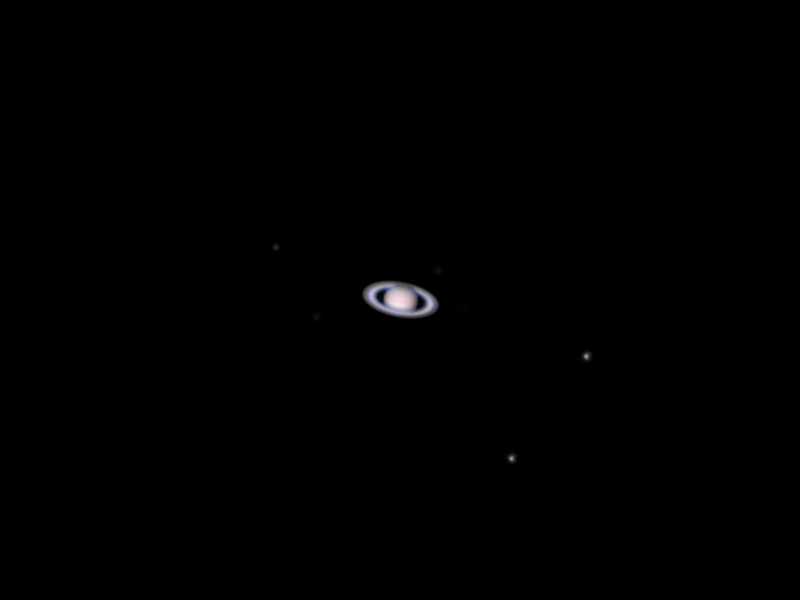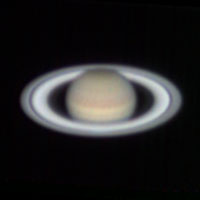in testing a tracking mount for the eclipse, i encountered an unpleasant surprise: the sun is brighter in the summer! so bright that the sun is now completely overexposed, blowing out any sunspots and surface detail. a few more filters and voila granulation and a few small sun spots (click to see surface detail at full size):
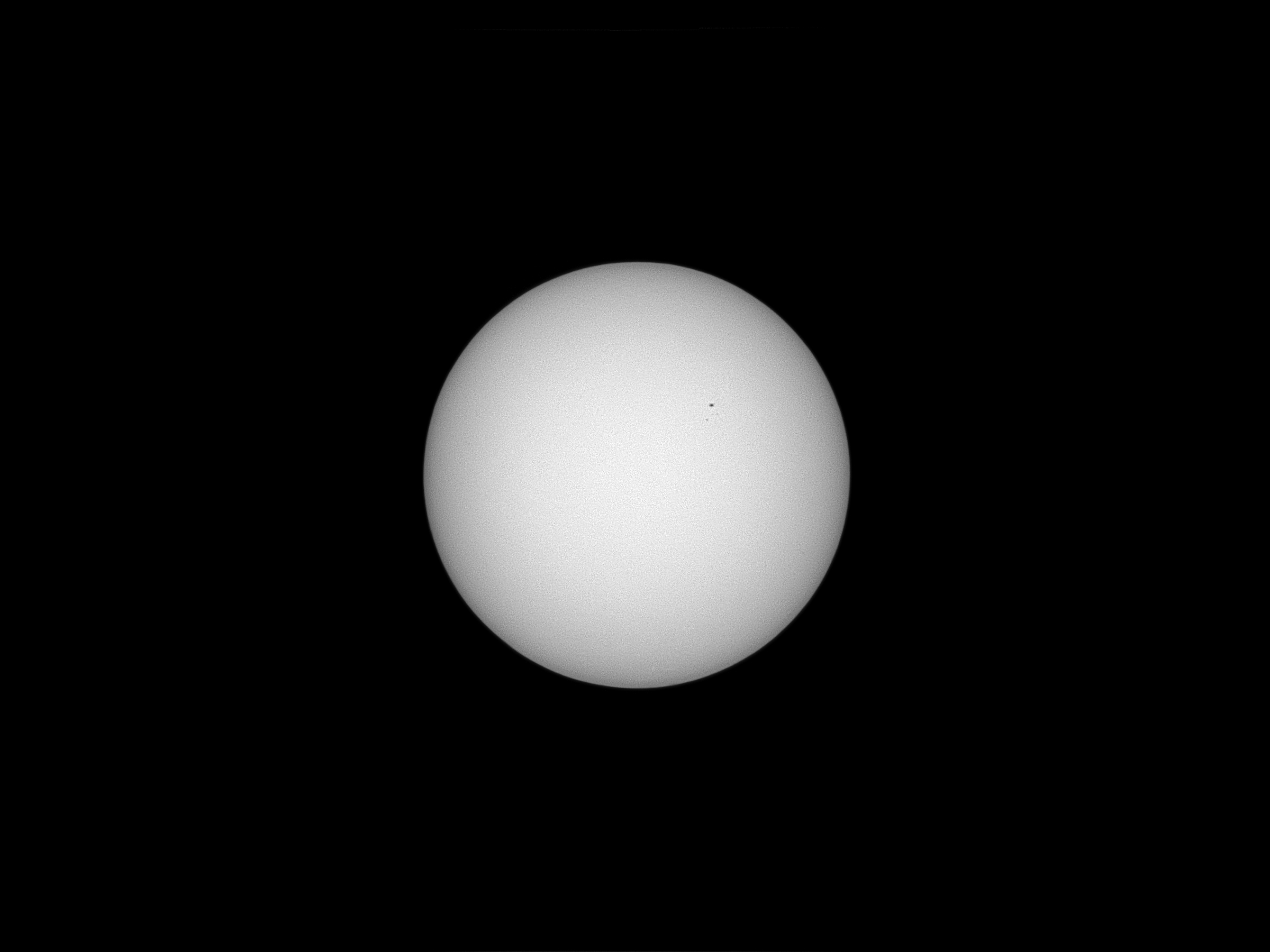 |
Sun 6/24/2017
click for full size |
Here's an image of the monster sunspot of October 2014 showing a close up of surface detail (click this link for more info on sunspots and granulation):
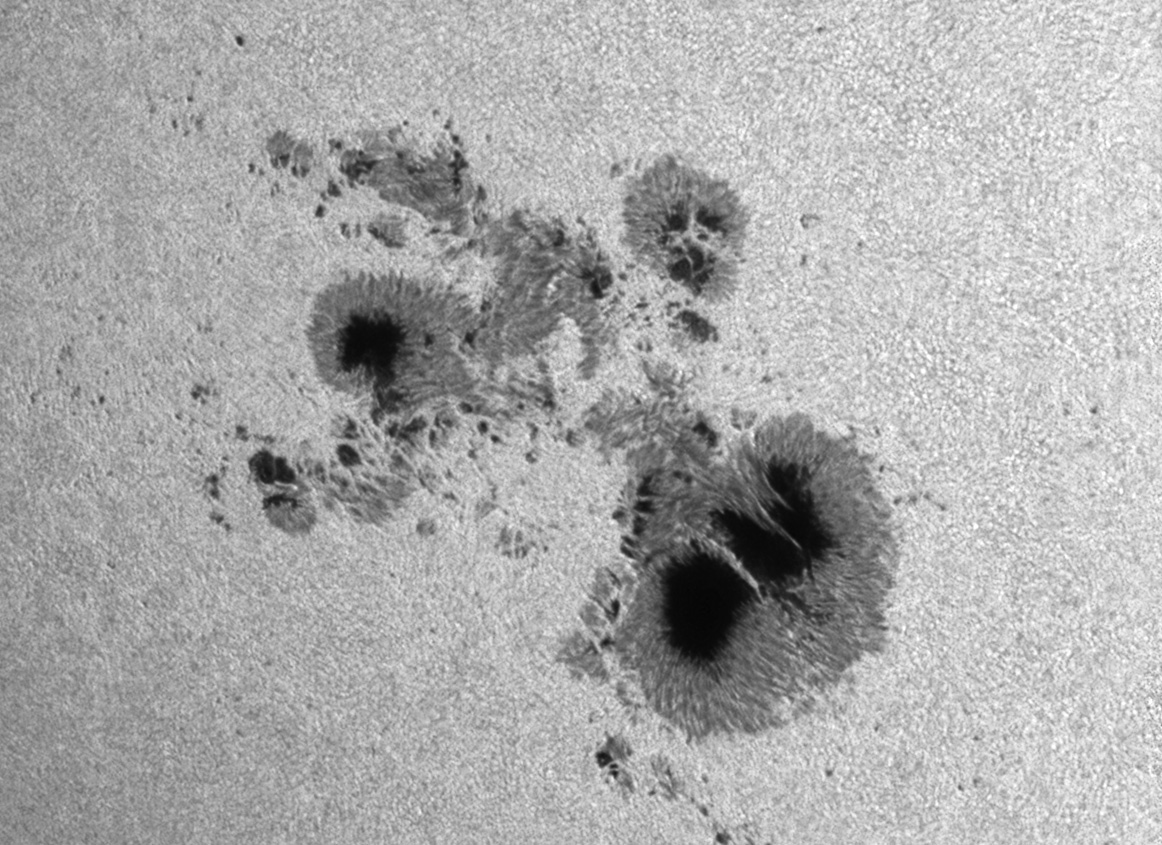 |
AR 12912 10/25/2014
click for full size |
salvaging sunspots:
A monster sunspot stole the show during the partial solar eclipse of 10/23/14 (see this link, and this link for more details on sunspots and granulation). The sunspot was so big that i couldn't capture the whole thing in one frame except at a slow frame rate so i kludged together a mosaic. several days later i imaged it again with the full field at slow frame rate, but for some reason the software wouldn't let me process it after i extracted the green channel (best contrast, see below). gave it another shot with updated software and was able to pull out a nice image despite the low frame rate (12 fps).
full disk filter discussion:
potential solutions to overexposure on the full disk:
1. additional filter in front of camera--too hard with takahashi adapters
2. stop down aperture--worked provisionally, but hate to throw out light
3. neutral density gel film in front of telescope--not optical quality so blurs image
4. larger filter in front of objective--an opportunity to test more filters :)
tested two types of filters:
-0.6 neutral density IR blocking
the advantage of this is that IR is poorly focused by refractors so it blurs the image a bit, so blocking IR should give a sharper image.
-green filter
why green? turns out the solar granulation has the highest contrast with a green filter. furthermore, refractors tend to handle green light best.
fortunately, the 77 mm filters fit perfectly on the dewshield of my takahashi FS-60, though it's not threaded.
results: both filters blocked enough light to prevent overexposure. hard to say whether the ND or green filter gave a better image, but stacking the two gave the best results in terms of granulation contrast (subtle difference).
Technical notes:
full disk:
DMK 51 web cam, Takahashi FS-60C, 60 mm aperture at f/4.2 with a reducer. Baader solar film, Tiffen 77 mm green and IR ND.6 filters. The field of view is approximately 96x72 arc minutes. 20 second video capture at 12 fps, aligned in autostakkert, wavelets in registax.
Eastbluff, CA 6/24/2017
sun spot:
camera ZWO ASI 120 MC, telescope Celestron Nexstar 8 GPS (8" SCT), Baader film and IR/UV block filter.
20 second video at 13 fps, 5 ms exposure.
green channel extracted with PIPP, aligned in autostakkert, wavelets in registax.
Eastbluff, CA 10/25/2014
